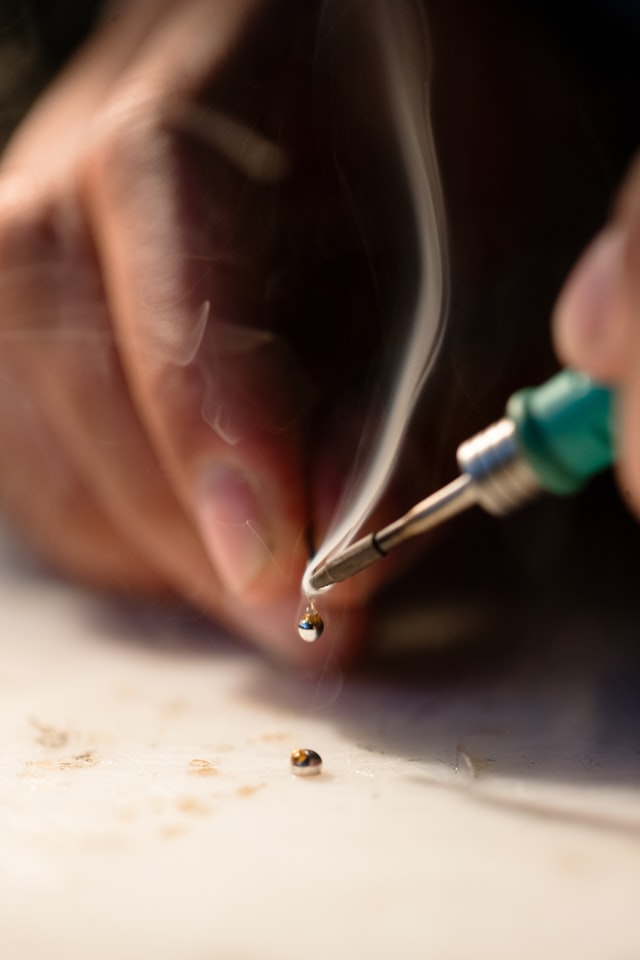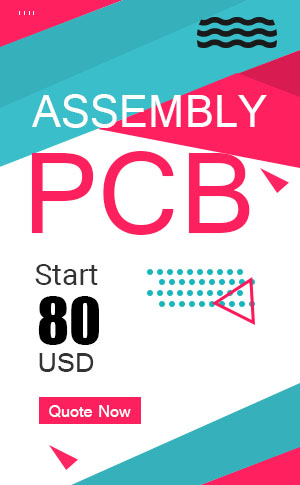General, quoting & support.
Add: Building E, No.58, Nanchang Road, Xixiang , Baoan District Shenzhen City, Guangdong, China
Tel : 0755-27348887
Fax : 0755-27349876
E-mail : svc@pcbastore.com
What is Reflow Soldering and Reflow Soldering Process
Simon / 2021-04-19
Contents [hide]
The development of new technology is increasing at an alarming rate. This technological advancement has also been witnessed in the manufacture of PCB boards. The overall design phase of PCB boards entails many steps. One of the grand processes is soldering, which plays a vital role in ensuring a high-quality designed board. Soldering also guarantees that circuits and other compounds are linked on the board perfectly. Normally, there are different techniques of soldering employed today. Any technique used depends on the kind of board to be manufactured and/or designed. The two main soldering techniques currently used are reflow and wave soldering. Let's have a look at what reflow soldering entails, how it is done, and how it is different from wave soldering.

What is Reflow Soldering?
Reflow soldering is a simple process that employs solder paste in molten form in order to connect electrical components to the PCB board. This process appears similar to the traditional soldering technique in different ways. However, the huge difference is that reflow soldering utilizes heated air to help keep solder paste in a molten state rather than soldering iron. One component used to heat the solder paste is an infrared lamp. What happens is that the board passes via the reflow oven and or tunnel for controlled heating. Solder paste is then applied to sections or parts you need to assemble components. Through reflow soldering, reliable and solid joints are created. This is because they never experience any thermal shock, making the joints to be very strong. Alternatively, reflow soldering demands less monitoring and is appropriate when soldering SMT components. Overall, reflow soldering is often employed for PCB assembly and in mass production.
Reflow Soldering Preparation
Reflow soldering needs proper preparation for PCB assembly to be successful. One of the best ways is applying the components and solder paste onto the board. These two phases are essential and must be extensively examined. When getting prepared for reflow soldering, be sure to consider solder paste or pick and place.
Solder paste
In simple terms, solder paste is employed on the PCB board only in areas that need soldering. Although PCB boards have layers that resist solder, it is important to include solder paste to only sections that actually need to be soldered. You can achieve this by simply utilizing a solder paste machine and a solder mask. This helps your solder paste to reach board sections that require it.
Pick and place
When you have the solder paste on your board, the next thing is placing the electronic devices or components in the right position. Usually, there is an automatic machine that picks and places components in your desired area accurately. The machine places your devices on the board and holds these components together by the solder paste's surface tension. For standard handling, this is somehow enough but care is required to make it a success. Gluing devices and/or components into the PCB board is easy; however, the process makes reworking very challenging.
Reflow Soldering Process Explained
The reflow soldering process entails a number of simple processes. Every process is essential and is needed to make sure that your board is introduced to the right temperature without the need of adjusting it or using thermal shock. Providing the right temperature in the reflow chamber or tunnel helps create the highest quality solder joints. This process includes 4 main stages as described below;
Preheat
Ensuring the board is introduced to the right temperature is important. In case the temperature is too high, chances are that the board's components or the board itself can be destroyed by the thermal vices. Furthermore, if the board is quickly introduced to the temperature, then the required areas will not receive the necessary temperature due to thermal mass. Alternatively, if your board is introduced slowly to temperature, then it will be hard for the board to acquire the right temperature. Basically, the recommended temperature rise rate employed for reflow infra-red soldering is 2-3 degrees/sec. However, this temperature can be customized to 1 degree/sec on rare occasions.
Thermal soak
After introducing the board to the right temperature, the next step is what is perceived to be thermal soaking. Thermal soaking is a process whereby the card is kept at the ideal temperature for some reasons. The first reason is making sure any board's section not well heated due to shadowing is considered. The next reason is to get rid of the solder paste volatiles or solvents and to ensure the flux is activated.
Reflow
The reflow section entails the part in the soldering process whereby the ultimate temperature is achieved. This is the stage where solder melts and develops the needed joints. The real process encompasses the flux minimizing the surface tension, especially at the metal junction to achieve metallurgical connection.
Cooling
After the reflow process is complete, the last part is cooling your board. While performing this process, it must be handled in a strategic way that doesn't initiate stress to the board's components. The ideal cooling prevents the formation of thermal shock and/or excess intermetallic. Generally, the cooling area has a temperature ranging from 86-212 degrees F. This temperature is ideal for developing a fast cooling and offers a significant sound joint.
Reflow Soldering Methods
Different heat transfer leads to various reflow soldering process methods. Currently, the world of EMS assembly depends on vapor or infrared phase methods. The combination of convection, radiation, and conduction, therefore, leads to heat transfer in different ways. Some professionals of reflow soldering design radiation bandwidth to foster heating up of air that surrounds the board. This makes SMD components and PCB board get heat. While the board heats up, there is the transfer of heat by conduction to the solder paste and the pads. This connection of conduction and radiation depends on up to 60% of the overall heat. Let's have a look at the two main methods of reflow soldering.
Infrared reflow soldering
This method employs a quartz tungsten lamp device as a short wavelength component for the infrared source of energy. The system of heat transfer is mainly by convection and radiation with a little amount of energy emanating from convection. There are other kinds of infrared systems that utilize emitters. This method of reflow soldering is perceived to possess many preheat zones and the soldering zone and cooling zone follows. The assembly of the PCB has the heat travel via all these kinds of the zone. The preheat zone has the energy transfer via conduction and relies on the velocity of your board getting to the system. When your board gets to the soldering zone, the temperature rises to the melting point. This helps minimize the overall time your board stays at this temperature peak. Although the high temperature is vital especially when changing the solder to molten form, prolonged heating can deteriorate the quality of the PCB materials. To achieve ideal solder joints, then the process has to employ thermal profiling.
Vapor phase reflow soldering
This method is designed to help solve issues recognized in the infrared reflow system. As solder paste exhibits a higher melting point and minimized wetting, an oxygen compound is crucial towards creating a top-notch joint. The infrared option can create a quality joint only by including nitrogen gas via the oven. Alternatively, the vapor phase option can offer this in the atmosphere. This method employs the convection method to provide heat to the components and board. It also employs liquid in the perfluoropolyether form to create vapor with unique temperatures when exposed to heat.
Reflow Soldering VS Wave Soldering
Reflow soldering and wave soldering are two main kinds of soldering for PCBs. Wave soldering deals with bulk soldering and allows you to make several circuit boards faster and effortless. On the other hand, reflow is somewhat different; however, it is the common method used in surface mount components. So which is the right one to use? Well, choosing either reflow soldering or wave soldering relies on different aspects, including the shape of the pad, component orientations, available time, and type of PCB among others. In most cases, it is complicated to understand wave soldering. Problems such as time available for wave soldering and board temperature require to be monitored carefully. Without coming up with an ideal wave soldering environment can lead to defects to your board.
On the other hand, reflow soldering does not demand you to always manage the environment. Despite that advantage, wave soldering appears to e cheaper and faster than the reflow counterpart. Reflow soldering is normally employed in the manufacturing of small-scale products that don't demand a method necessary for cheap and faster mass production.
Remember that both wave and reflow soldering can be employed in certain scenarios. You can consider wave solder parts of a board and choose the other part to reflow solder. Besides, you can consider hand soldering or manual soldering PCB components.
Conclusion
Soldering is an important process in the connection of components in the PCB board. The type and the method of soldering you choose ultimately depend on the quality and the type of board at hand. Remember that considering reflow soldering can be vital to making sure that PCB components are wholly and strongly soldered. The flip side is that it can be time-consuming and daunting to set up.
Previous article:Rapid PCB Prototyping: How to choose the best service?







